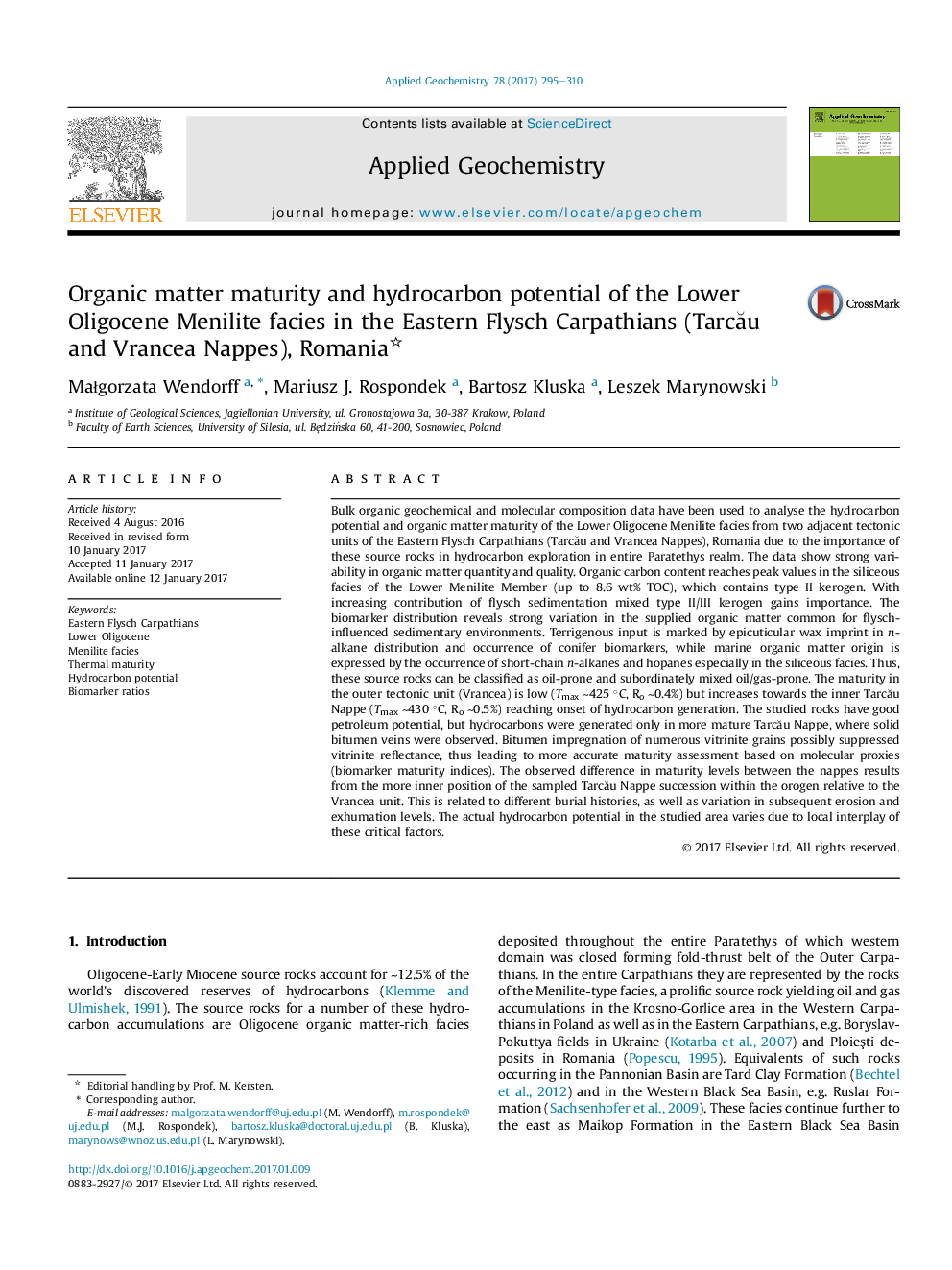| کد مقاله | کد نشریه | سال انتشار | مقاله انگلیسی | نسخه تمام متن |
|---|---|---|---|---|
| 5752691 | 1620213 | 2017 | 16 صفحه PDF | دانلود رایگان |

- Lower Oligocene Menilites of the TarcÄu and Vrancea Nappes in the Eastern Flysch Carpathians were analysed.
- Oil-prone type II kerogen and mixed II/III type occur in both tectonic units.
- Biomarker maturity indicators provide better maturity resolution compared to optical methods.
- Organic matter from the TarcÄu Nappe attained the oil window while from the Vrancea is immature.
- Rocks of the Lower Menilite Member reveal good petroleum potential.
Bulk organic geochemical and molecular composition data have been used to analyse the hydrocarbon potential and organic matter maturity of the Lower Oligocene Menilite facies from two adjacent tectonic units of the Eastern Flysch Carpathians (TarcÄu and Vrancea Nappes), Romania due to the importance of these source rocks in hydrocarbon exploration in entire Paratethys realm. The data show strong variability in organic matter quantity and quality. Organic carbon content reaches peak values in the siliceous facies of the Lower Menilite Member (up to 8.6 wt% TOC), which contains type II kerogen. With increasing contribution of flysch sedimentation mixed type II/III kerogen gains importance. The biomarker distribution reveals strong variation in the supplied organic matter common for flysch-influenced sedimentary environments. Terrigenous input is marked by epicuticular wax imprint in n-alkane distribution and occurrence of conifer biomarkers, while marine organic matter origin is expressed by the occurrence of short-chain n-alkanes and hopanes especially in the siliceous facies. Thus, these source rocks can be classified as oil-prone and subordinately mixed oil/gas-prone. The maturity in the outer tectonic unit (Vrancea) is low (Tmax â¼425 °C, Ro â¼0.4%) but increases towards the inner TarcÄu Nappe (Tmax â¼430 °C, Ro â¼0.5%) reaching onset of hydrocarbon generation. The studied rocks have good petroleum potential, but hydrocarbons were generated only in more mature TarcÄu Nappe, where solid bitumen veins were observed. Bitumen impregnation of numerous vitrinite grains possibly suppressed vitrinite reflectance, thus leading to more accurate maturity assessment based on molecular proxies (biomarker maturity indices). The observed difference in maturity levels between the nappes results from the more inner position of the sampled TarcÄu Nappe succession within the orogen relative to the Vrancea unit. This is related to different burial histories, as well as variation in subsequent erosion and exhumation levels. The actual hydrocarbon potential in the studied area varies due to local interplay of these critical factors.
Journal: Applied Geochemistry - Volume 78, March 2017, Pages 295-310